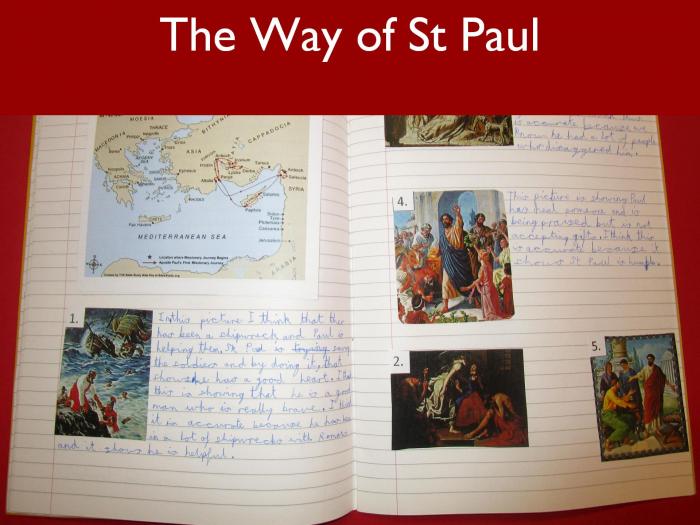
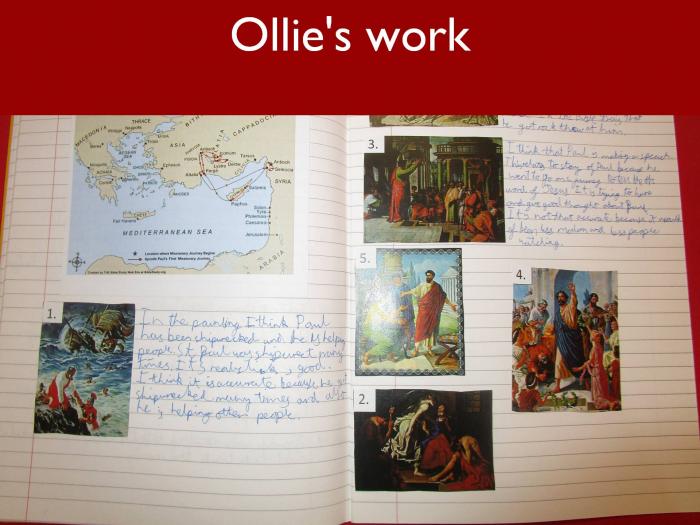
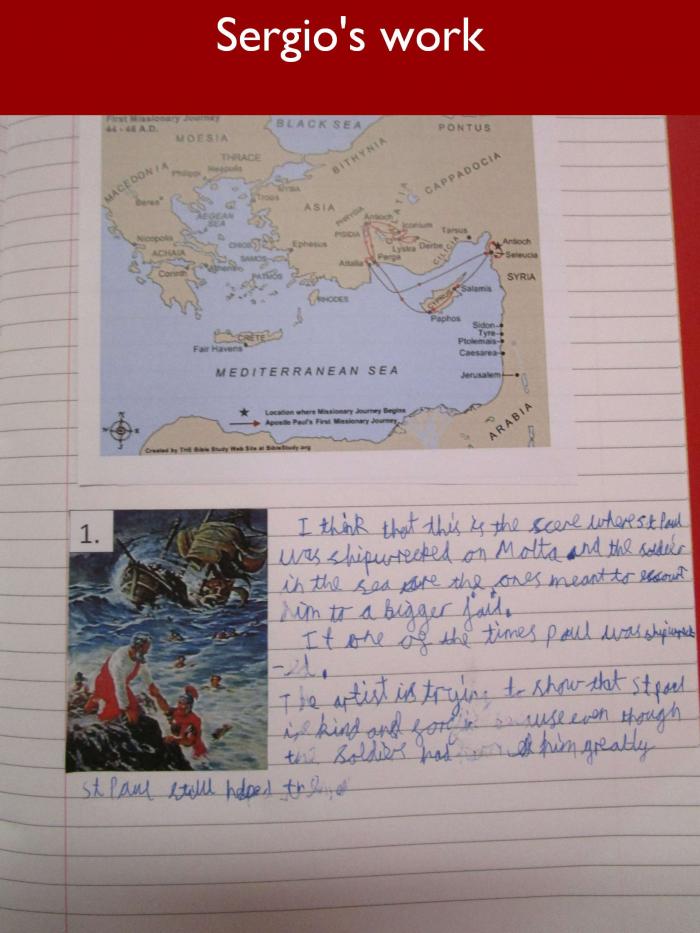
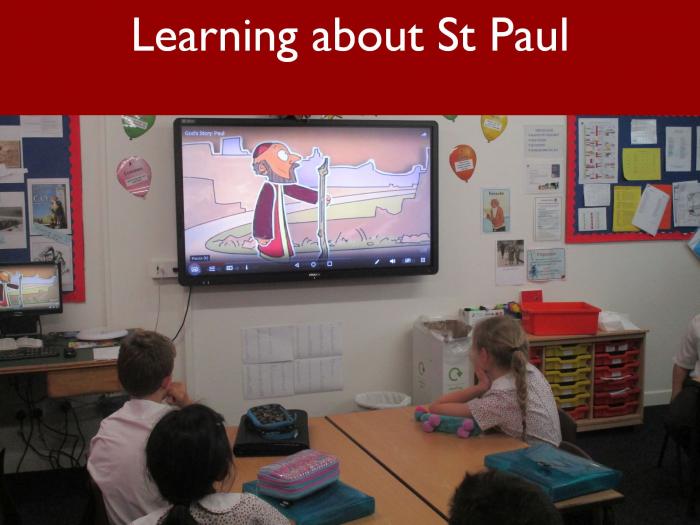
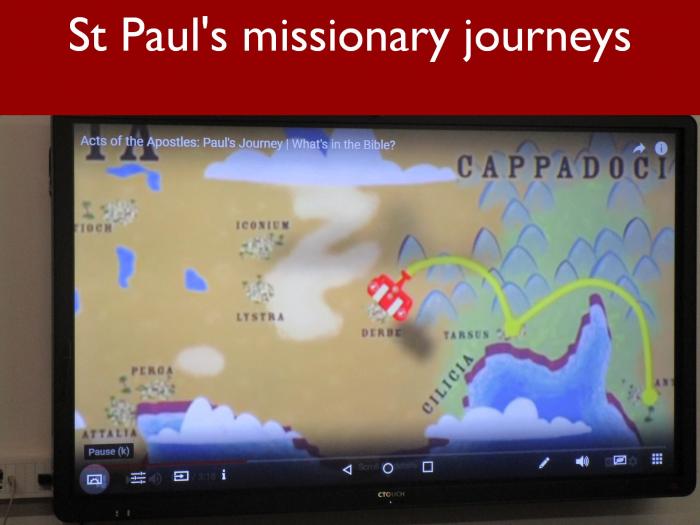
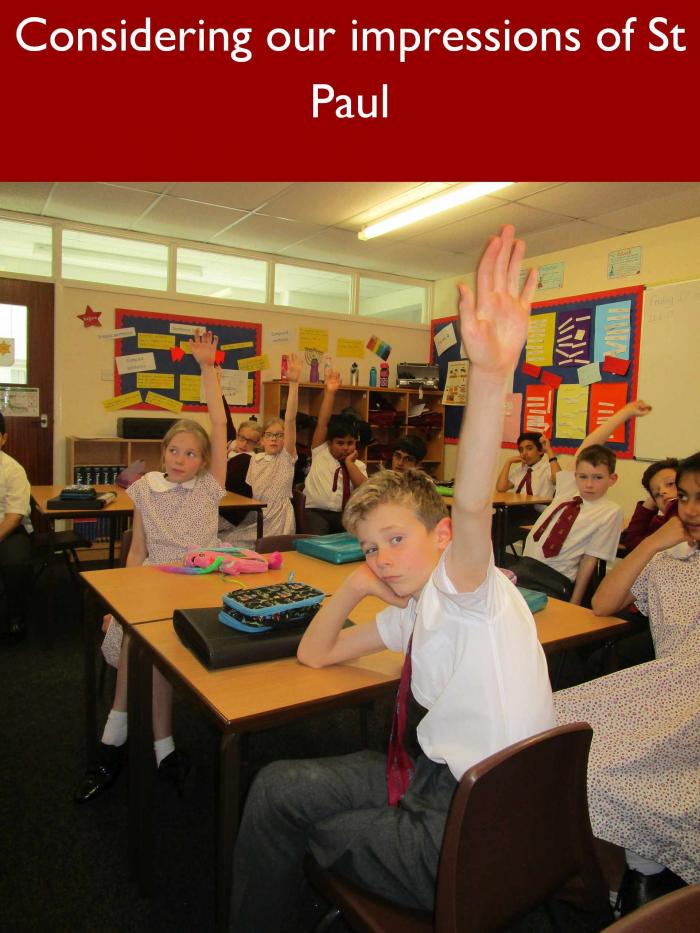
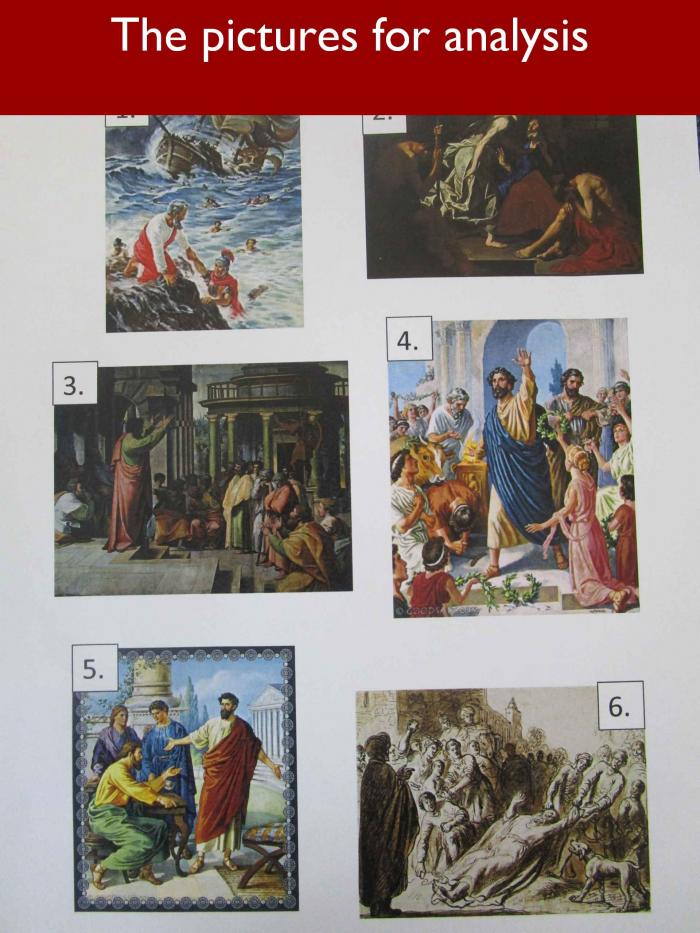
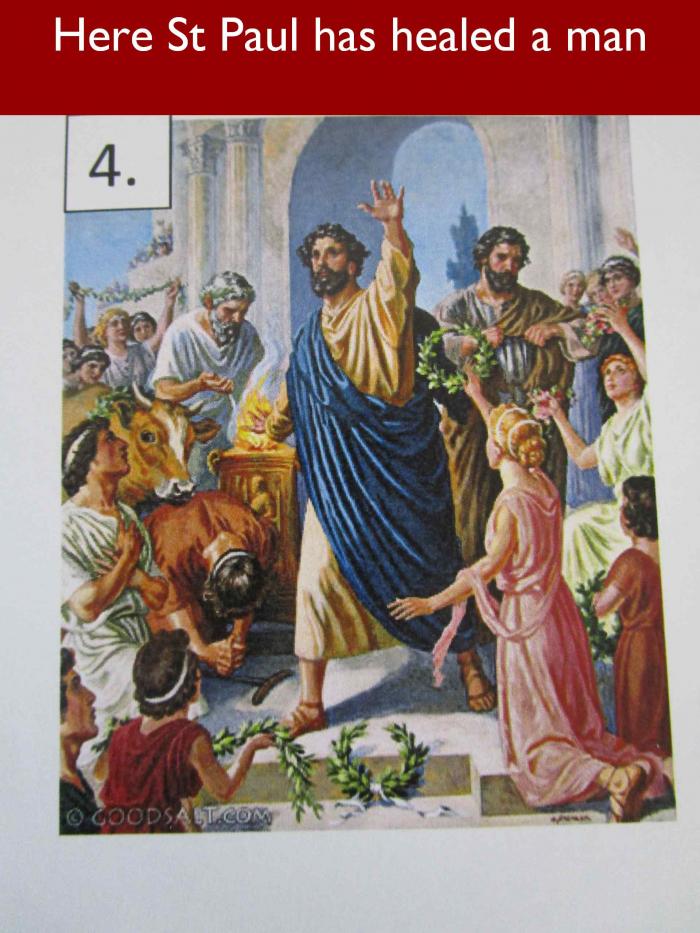
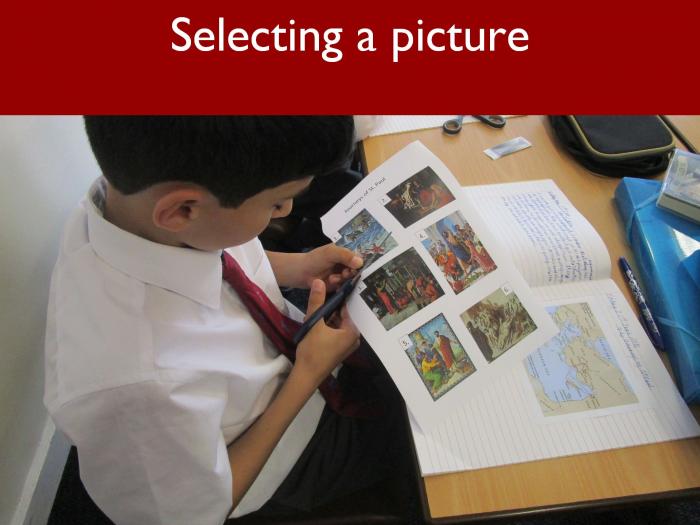
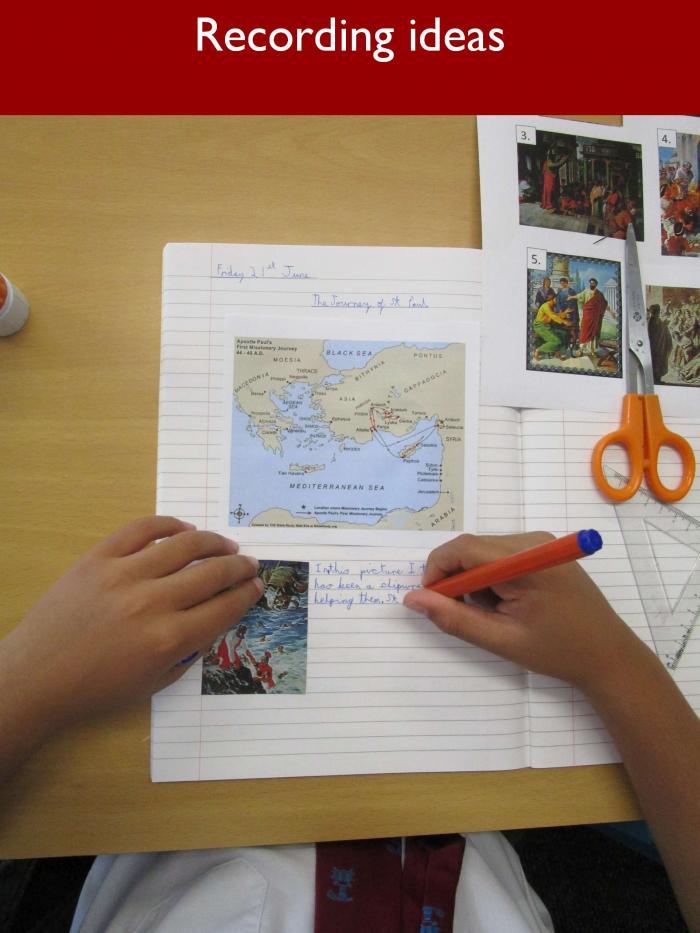
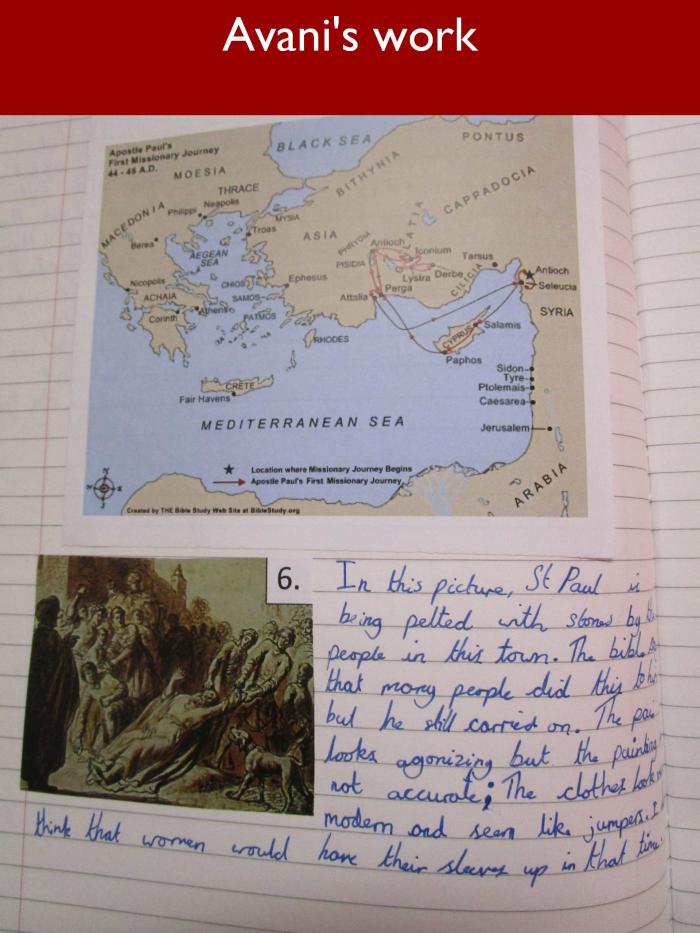
The Way of St Paul
We have just come to the end of a period known at Eversfield as Open Door Fortnight, during which time teachers and teaching assistants are invited to spend at least one lesson observing the work of a colleague. This is an extremely valuable opportunity, as your eyes are often opened to new and successful ways of doing things, and you also find yourself reflecting critically on your own practice. It is something we do twice a year. I was lucky enough to spend an hour with the wonderful Mrs Buxton and her Form 4 Maths group, out of which the last blog post developed. Usually, though, these blogs arise from only a virtual presence in another teacher’s classroom. However, once in a while, we are asked to step in and cover someone else’s lesson, and that, too, can provide us with a window into another area of learning.
Recently, when Mr Yates was busy at the Form 3 and 4 Swimming Gala, I was asked to cover his R & P lesson with 5MS. The lesson sounded so exciting that I decided to have a go at turning it into a blog. To give you a little background, this term Form 5 have been exploring how the word of God was spread during the years following Jesus’ crucifixion; crucial years during which Christianity began to gain a foothold in the eastern Mediterranean. Indisputably, the most pivotal figure in this process was St Paul, who made a sequence of missionary journeys following his dramatic conversion on the road to Damascus.
The more I looked into it, the more I realised what a challenge I had been set. The subject is vast. St Paul is thought to have written as many as thirteen of the twenty seven books of the New Testament. His journeys account for a sizeable chunk of the contents of the Acts of the Apostles. One of Britain’s leading academic theologians, Professor Tom Wright, has spent several years of his professional career exploring the life and work of St Paul. What could I hope to achieve in an hour?
Mr Yates has often used St Paul as an inspiration for his whole school assemblies on a Monday. The children have learnt that he was born into a wealthy family in the city of Tarsus in what is now Turkey, and for the first part of his adult life he actively persecuted Christians. After his conversion, everything changed. He vowed to spread the word of God.
After reflecting on what the children already knew about St Paul, I started the lesson with 5MS by looking at a couple of videos. The first gave some brief biographical background to St Paul and the second, whilst equally light-hearted and child friendly, gave the class an idea of the scale of the missionary journeys. St Paul made three in all, each covering in excess of one thousand miles, at a time when travelling was fraught with danger. He was shipwrecked three times, pelted with stones and thrown into prison. This suggested he had the most extraordinary determination in pursuit of his cause, something which 5MS were very quick to grasp.
At the core of the lesson were six images selected by Mr Yates to represent different aspects of St Paul’s work as a missionary. The children’s task was to analyse the pictures carefully, identifying not only the subject matter in relation to St Paul’s life but also to consider what impression of the man the artist was attempting to portray. Finally, Mr Yates wanted to know to what extent the pupils believed the pictures to be accurate.
This is a fascinatingly complex area of study, as Form 3 discovered earlier this year in their investigation of images of Jesus. 5MS wasted no time in selecting three pictures for analysis. The first picture showed St Paul in the midst of a terrifying shipwreck. A shipwreck off the island of Malta is mentioned in the Acts, and a coastal area known as St Paul’s Bay remains to this day, so we decided it was fair enough to presume that the image was accurate. But how can we be sure of St Paul’s role in what happened? Rosa could see immediately that the artist wanted to portray Paul as a good man. Saif commented on his tremendous bravery. Meanwhile, Emilia said that the men in the water looked like Roman guards, suggesting that perhaps he was on his way to Rome, where history records that he was subsequently executed on the orders of the Emperor Nero.
In Picture 2, St Paul is clearly languishing in some sort of prison. As Lucy noted, ‘An angel has been sent down from heaven to help St Paul and to secure what is going to happen in the future.’ Remembering that St Paul did go to prison more than once, she was convinced of the picture’s accuracy, as well as St Paul’s astonishing determination.
For Darshan, the classical background to Picture 3 was enough to prove its authenticity. He said it looked like Italy, one of the places St Paul is known to have visited. It was a good suggestion but he was not quite right because it is actually intended to be Athens. However, I suggested that the background could be generic, and encouraged the children to ponder as well whether the clothes were perhaps too colourful to have been worn in Biblical times. In fact, this painting by Raphael dates from the Sixteenth Century and is a closer reflection of the fashions in Renaissance Rome. Avani queried the clothes in Picture 6, which she felt looked more like modern jumpers although, in fairness, given the nature of the image, I think it is hard to tell.
Looking at Picture 5, which portrays a group of men engaged in a heated debate, Joshua addressed one of the central issues in St Paul’s missionary work. He saw that, at the root of the argument, lay people’s inability to accept that God is not real. Meanwhile, Raahil’s interpretation of Picture 4 was that, despite his rather imperious pose, the artist intended to convey a sense of St Paul’s humility. He may have healed a man, he argued, but he wouldn’t accept the gift of a laurel wreath.
Six pictures, a whole classful of varying points of view; such is the nature of art. Intriguingly, in the next lesson, Mr Yates has moved on from the persuasive quality of paintings to encourage the children to understand St Paul’s challenge directly from his point of view. The children themselves have had to take on the role of persuaders, arguing the case to keep a particular well known contemporary person in a sinking balloon, or to settle on one single useful object to take to a desert island. Luckily for 5MS, even for the children whose argument did not prevail, they could speak freely without fear of the censure that St Paul encountered in his work.